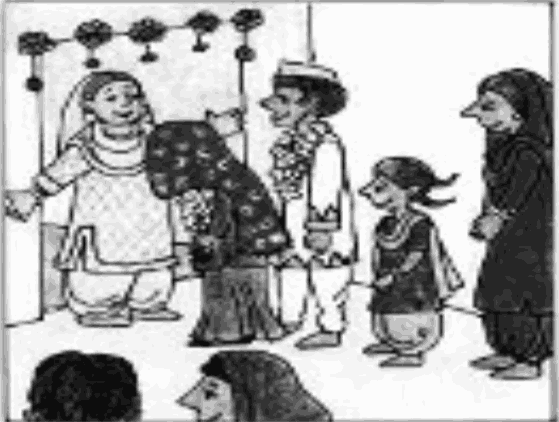NCERT Solutions for Class 4 EVS Chapter 9 - Changing Families
FAQs on NCERT Solutions for Class 4 Evs Chapter 9 Changing Families
1. List the changes that have occurred in Nimmi's and her family member's lives after the arrival of the baby.
Nimmi now has a younger sibling whom she can take care of. Nimmi is now mostly indulged in playing with her baby sister. Nimmi's mother is fully busy taking care of the baby along with Nimmi. Nimmi's father now needs to help his wife by sharing the chores at home. Her grandparents can now take care of their new granddaughter along with Nimmi and can shower all their love for them.
2. Explain the changes in Tsering's family due to his father's transfer.
Tsering's family now needs to live away from their relatives. His father needs to adapt to the new work environment and manage the family. His mother is now relatively alone in the new place as there are no relatives around. Tsering will now join a new school and make many new friends. He might feel a little separated initially but will adapt fast. All these changes are for good in Tsering's family. They now get new exposure in life and will soon adapt to the conditions.
3. What are the different reasons for changes in a family, according to Chapter 9 of Class 4 EVS?
There are many reasons due to which changes may occur in families. Some important reasons for changes in a family include the marriage of a family member, birth of a child, moving to a new place due to transfer of a family member, getting a new job or setting up a business at a new place, getting admission in a new college by a family member, an unfavorable climate of a place for the health of a family member, unfavorable circumstances of a place such as riots.
4. What changes will occur in Nazli’s family due to the wedding, according to Chapter 9 of Class 4 EVS?
A new member will come to Nazli’s family due to the wedding. The new member will be her sister-in-law. Her family members had to adjust with the new member. Sometimes Nazli may have to share her things with her sister-in-law. Other family members also have to make changes in their behavior to adjust to the new member. Thus, a wedding can bring many changes to a family.
5. What changes will occur in a family from where a new bride has come, according to Chapter 9 of Class 4 EVS?
Changes will also occur in the family from where the new bride has come. Her family members will feel sad and will miss her a lot. Now, other members of the family have to do the work that the bride did. They have to make other adjustments in their house, such as the bride's room may now be shared by other brothers and sisters. The mother and father of the bride may miss her the most on several occasions.
6. How NCERT Solutions for Chapter 9 of Class 4 EVS given on Vedantu can help my child for exams?
NCERT Solutions for Chapter 9 of Class 4 EVS given on Vedantu is useful for your child because all solutions are made in simple language to easily revise and learn for their final exams. All solutions are made by expert subject teachers having a deep understanding and knowledge of the subject. They keep in mind the intelligent level and scope of every topic in mind while preparing NCERT solutions. Therefore, your child can score high marks by studying the NCERT Solutions for Chapter 9 of Class 4 EVS.
7. Is it sufficient if my child only studies from NCERT Solutions for Chapter 9 of Class 4 EVS for exams?
Yes, it is sufficient if your child only studies from the NCERT Solutions for Chapter 9 of Class 4 EVS because students can understand the main idea of the Chapter and can write answers to textbook questions easily. NCERT Solutions can help students to learn specific answers for each question that are important from the exam’s point of view. Students can revise NCERT Solutions for final exams and can score high marks. To download the NCERT Solutions for Chapter 9 of Class 4 EVS free of cost, visit the Vedantu website or download the Vedantu app.


















